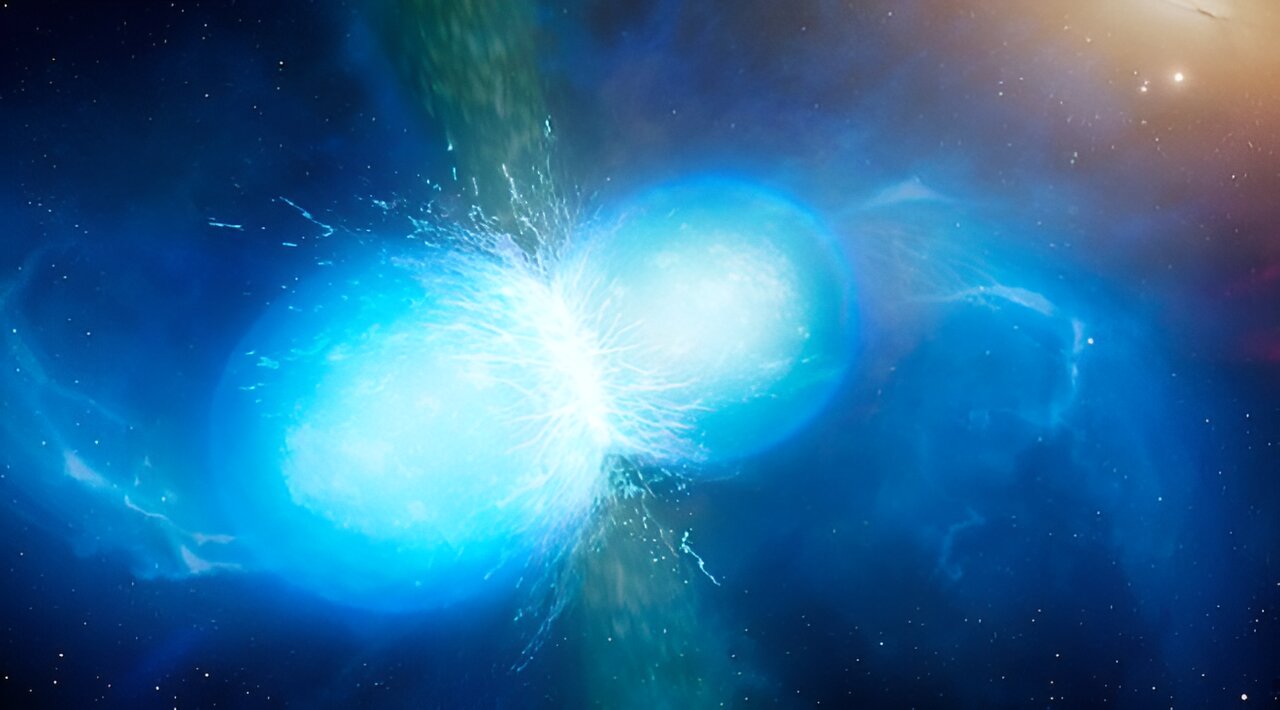The Cosmic Dance: How Gravitational Waves Might Be the Architects of Life
Delving into the mysteries of the cosmos, recent research spearheaded by John R. Ellis at Kings College London unveils a fascinating possibility: the very fabric of human life may be woven from the threads of cosmic events, particularly those involving gravitational waves. This groundbreaking study explores the profound connections between these astrophysical phenomena and the essential elements that constitute our biological existence.
Unraveling the Universe’s Secrets: Gravitational Waves and the Blueprint of Life
The Intriguing Link Between Gravitational Waves and Biological Elements
Imagine the building blocks of our existence stemming from the far reaches of space, where monumental collisions between celestial bodies unleash gravitational waves. The research team led by Ellis proposes that elements such as iodine and bromine, crucial to our biological functions, have their origins in these cataclysmic events. The spiraling dance of neutron stars, culminating in a violent embrace, may be the progenitor of these vital elements.
As these binary stars inexorably draw closer, their energy emissions in the form of gravitational waves set the stage for the creation of elements that are indispensable to mammalian life. This celestial interplay suggests a direct correlation between the existence of gravitational waves and the presence of life-sustaining elements on Earth.
The Cosmic Forge: Supernovae and the Creation of Essential Elements
Our bodies are a mosaic of elements, predominantly hydrogen, carbon, and oxygen, complemented by a suite of trace elements. The majority of these, especially those with an atomic number under 35, are forged in the heart of supernovae. These stellar giants, upon exhausting their nuclear fuel, implode and scatter their enriched guts across the cosmos.
However, the elements iodine and bromine are birthed through alternative cosmic processes. These elements are vital for the production of thyroid hormones and the development of connective tissue, respectively, and their cosmic genesis is as intriguing as it is essential.
The Role of Radioactive Decay in Earth’s Geology and Climate Regulation
Radioactive elements such as thorium and uranium play a subtle yet significant role in the grand tapestry of life. Their decay within the Earth’s mantle provides the heat that drives the lithosphere’s dynamics. This geothermal energy fuels the movement of tectonic plates, which in turn plays a crucial role in carbon sequestration and the prevention of a runaway greenhouse effect, a fate that befell our planetary neighbor, Venus.
The delicate balance of these processes underscores the intricate relationship between the Earth’s geology and the broader cosmic forces at play, further emphasizing the interconnectedness of life and the universe.
The r-process: A Stellar Alchemist’s Crucible
The r-process, or rapid neutron-capture process, is a stellar phenomenon responsible for creating about half of the heavy elements beyond iron. This process involves a heavy atomic nucleus capturing neutrons in rapid succession, leading to the formation of heavier isotopes. The conditions required for this process are extreme, with neutron densities and temperatures reaching astronomical levels.
Ellis’s team has determined that this process is responsible for the majority of iodine on Earth, along with significant amounts of bromine, gadolinium, and even the entirety of the planet’s thorium and uranium. The r-process is a testament to the universe’s ability to create complexity from chaos.
Kilonovae: The Violent Birthplaces of Life’s Building Blocks
Kilonovae, the explosive aftermath of neutron star mergers, serve as the crucibles for the r-process. These events, marked by the release of gravitational waves, are so powerful that they were first observed through the gravitational wave event GW170817. The energy emitted in the final moments of these mergers is colossal, rivaling the power output of entire galaxies.
These cosmic conflagrations are not only spectacular but also the forges where many of life’s elemental ingredients are created. Observations from gravitational wave observatories, coupled with electromagnetic signals, have provided evidence of the materials ejected during these cataclysmic events, further cementing their role in the cosmic alchemy that seeds life.
Future Research: Lunar Clues to Earth’s Elemental Heritage
The research team suggests that the lunar surface, untouched by human activity, may hold clues to the history of Earth’s elemental composition. By analyzing isotopes such as 129I in the lunar regolith, scientists hope to trace the origins of elements essential to human life back to their astronomical sources.
This pursuit not only enriches our understanding of the universe but also offers a profound perspective on the origins of life itself. The study of these cosmic phenomena continues to reveal the intricate web of connections that bind the cosmos to the very essence of our being.
